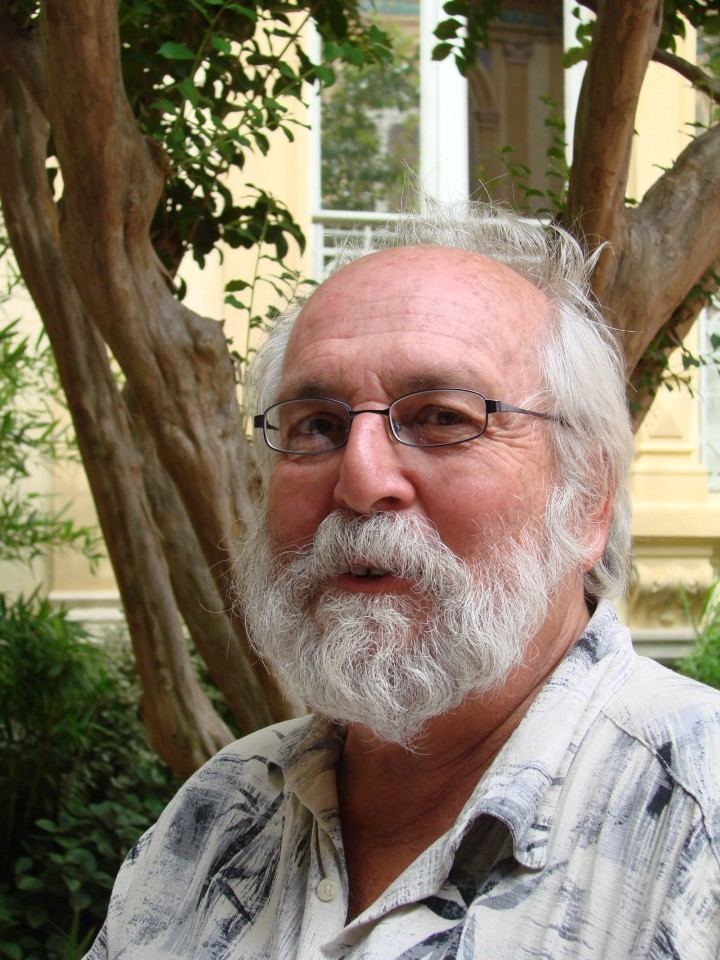Name Francois Diascorn | Role Photographer | |
Awards World Press Photo Award for Nature | ||
Rencontre avec fran ois le diascorn maison europ enne de la photographie
François Le Diascorn (Born January 10, 1947 at La Flèche, near Mans, Sarthe département) is a French photographer, close to the humanist school, who has developed a poetic vision of the world through his unusual images in which a dream-like world seems to superimpose itself upon reality.
Contents
- Rencontre avec fran ois le diascorn maison europ enne de la photographie
- Only in paris du photographe fran ois le diascorn
- Biography
- Personal books
- Collective books
- References
Only in paris du photographe fran ois le diascorn
Biography

Nothing in François Le Diascorn’s background indicated the artistic road he was ultimately to follow (rather, he was directed toward a safe and prosperous future via the Institut d’Etudes Politiques by his professor father) except for the sense he often had of the dream-like nature of existence, of its unreality. (As a child he believed the world had come from his own thoughts and that if he stopped thinking about it, it could disappear!). But his destiny swerved as a result of a trip to Egypt when he was about 17 where he met another young traveler who introduced him to photography, and with a subsequent trip to India in 1969 and a return trip in 1971, trips which stimulated a budding passion: to try to capture in images that dream-like nature of existence he’d always been conscious of as a child—thus keeping the world real by his vision of it—and which he began to see more clearly as he gazed through a camera lens. He purchased his first cameras for that 1971 trip and since then is to be found without them only when sleeping, and even then, his cameras are in a bag just next to his bed (or sometimes IN it if he is on the road in a questionable hotel!) should he need them to record the dreaming nights as well as the dreaming days. (His dreams are often photographic ones!)

He has always chosen his own photographic subjects—which means he has accepted a certain rigor of existence—such absolute dedication to one’s work, the work of recreating the world according to the artist’s vision of it—is often a solitary road and so his has been. François Le Diascorn’s rigorously composed photography is a work of love and necessity, and whether considered fashionable or not, whether materially remunerative or not, like the imaginary gypsy parents he likes to say he had, he continues to unceasingly travel the world, knapsack on his back or sleeping in his tent or in the back of his car, photographing whatever he meets of interest on the road but with a predilection for certain subjects: magical animals, creatures of the oceans, Buddha and Christ, angels and demons, hospitals and carnivals, trees and tree people, children and clouds, monks and shepherds, his fetish cities and countries Paris, Venice, Sète, Varanasi, Egypt, India, Greece.
It is through his third eye, the lens of his camera, that François Le Diascorn tries to understand the how and why of existence, particularly his own, through capturing and transmitting the beauty and the strangeness he encounters. In a quirky style, it manages to capture the unexpected, that chance puts in his way: the tone is often unusual, but it reflects what he sees with absolute mastery of the frame and the play between light and shadow. His life is a never-ending journey which leads him from one waking dream to another: solitary quest of the transparent and fugitive messages of the world.
He has received a number of awards and grants for his work, among them a national grant for research and creation (for a year in the United States) and a Leonardo da Vinci grant (for a project in Japan). His photographs have been shown in museums and galleries in Europe and the United States and are in a number of collections including that of the Cartier Foundation for Contemporary Art, the Bibliothèque Nationale, the French National Center of Plastic Arts, the European Center for Photography in Paris (MEP), the Pompidou Center in Paris, the Nicephore Niepce Museum, the Réattu Museum in Arles….
At the end of the 1970s, François Le Diascorn became a member of the famous Viva Photo Agency to which belonged for a short time a number of famous French photographers such as Guy Le Querrec, Hervé Gloaguen, Martine Franck, Claude Raimond-Dityvon, François Hers, or the American William Klein. He has been a member of the Rapho Photo Agency since 1986.
In October 2010 for an exhibition at the Pavillon Vendome in Aix-en-Provence, François Le Diascorn's first book, Only in America , a collection of his best work from the USA (with texts in English and in French), was published by Editions Crèaphis, France. A second edition of the book was printed in 2011.
In the same spirit, Editions Crèaphis published Only in Paris in November 2014, a collection of photographs of Paris taken over a period of forty years (between 1971 and 2014) by Le Diascorn. In the preface to this book, Francine Deroudille, the daughter of Robert Doisneau, said about François Le Diascorn : " He brings back from his journeys timeless images, sensitive and mysterious, sometimes impregnated with a humor that he doesn't necessarily lay claim to but that he doesn't refuse either, on the condition that he be positioned just there, on the edge of 'sheer chance' . . . This modest and discreet photographer cannot be placed in any photographic line of descent. Yet he has now joined the lineage of the greatest."
